Warblers - Fun Facts
In Ventura county, we have a few species of warblers that are regular visiters. Warblers can be difficult to identify since they are small and very active. They don't often come to backyard feeders, but some species will occasionally.
Orange-crowned Warbler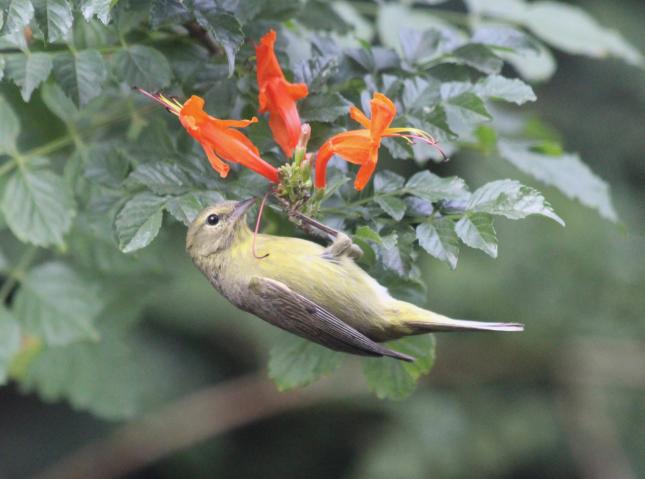
- Orange-crowned Warblers are fairly plain yellowish or olive—they are more yellow on the Pacific coast and grayer, particularly on the head, farther east. They have a thin white or yellow stripe over the eye, a blackish line through the eye, and a pale partial eyering. The namesake orange crown patch is rarely seen, but may become visible when the bird raises its head feathers in excitement or agitation. The undertail coverts are bright yellow and are often the brightest part of the plumage.
- These busy birds forage low in shrubs, and are one of the few warblers that's more common in the West than the East. Orange-crowned warblers can be found year-round in Ventura county, but can be seen in larger numbers during spring and fall migration.
- Orange-crowned warblers can come to your suet feeders, mealworm feeders or you may see them foraging for insects off of your plants.
Common Yellowthroat
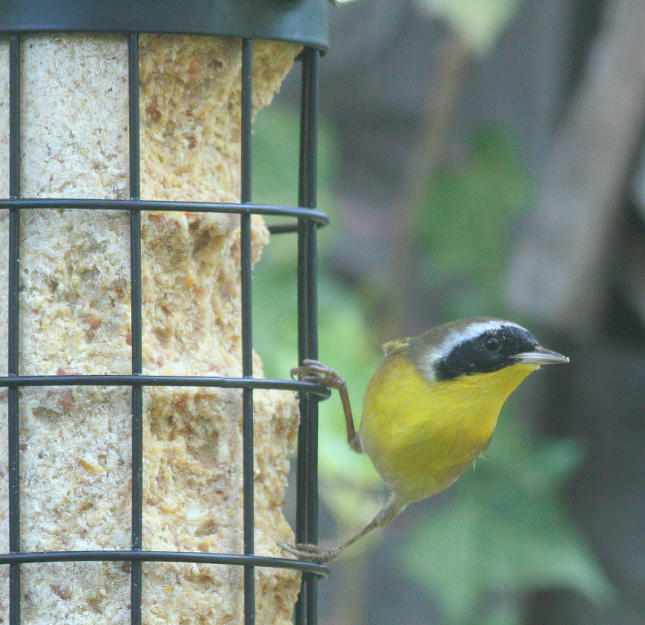
- Common Yellowthroats spend much of their time skulking low to the ground in dense thickets and fields, searching for small insects and spiders. Males sing a very distinctive, rolling wichety-wichety-wichety song, and both sexes give a full-sounding chuck note that is easy to learn.
- Adult males are bright yellow below, with a sharp black face mask and olive upperparts. A thin whitish line sets off the black mask from the head and neck. Immature males show traces of the full mask of adult males. Females are a plain olive brown, usually with yellow brightening the throat and under the tail. They lack the black mask.
- Common Yellowthroats can be found year-round in Ventura county.
Yellow-rumped Warbler
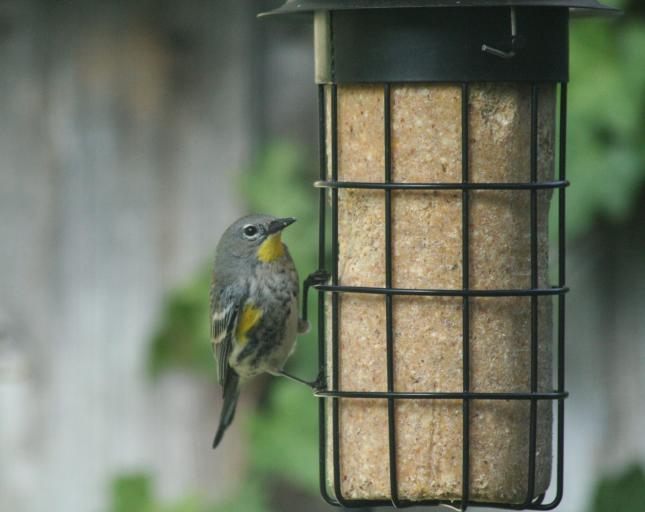
- In summer, both sexes are a smart gray with flashes of white in the wings and yellow on the face, sides, and rump. Males are very strikingly shaded; females are duller and may show some brown. Winter birds are paler brown, with bright yellow rump and usually some yellow on the sides.
- Yellow-rumped Warblers are perhaps the most versatile foragers of all warblers. They're the warbler you're most likely to see fluttering out from a tree to catch a flying insect, and they're also quick to switch over to eating berries in fall.
- Yellow-rumped warblers are usually seen in Ventura county during winter.
Yellow Warbler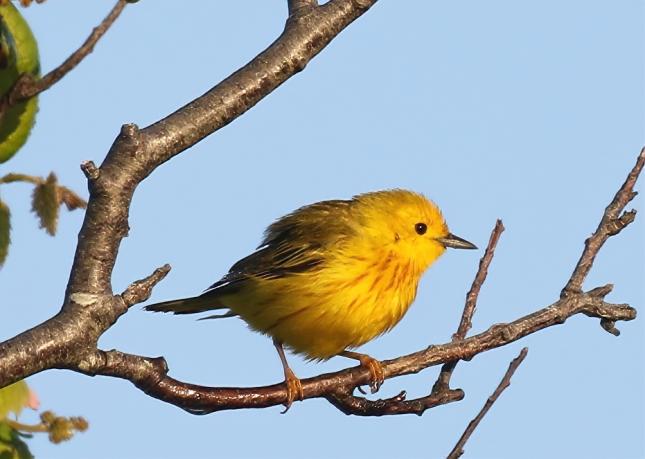
- Yellow Warblers are uniformly yellow birds. Males are a bright, egg-yolk yellow with reddish streaks on the underparts. Both sexes flash yellow patches in the tail. The face is unmarked, accentuating the large black eye.
- Look for Yellow Warblers near the tops of tall shrubs and small trees. They forage restlessly, with quick hops along small branches and twigs to glean caterpillars and other insects. Males sing their sweet, whistled songs from high perches.
- Yellow warblers can be found primarily in Ventura county in the spring and summer.
Wilson's Warbler
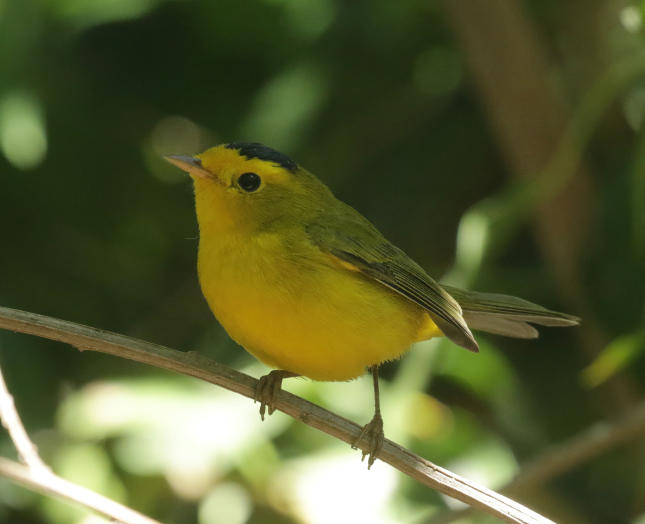
- Wilson’s Warblers are bright yellow below and yellowish olive above. Their black eyes stand out on their yellow cheeks. Males have a distinctive black cap. Adult females are similar in color but show variations in the amount of black on the top of the head, from a few blackish feathers to a small dark cap. Juvenile females have an olive crown and a yellow eyebrow.
- Wilson’s Warblers flit restlessly between perches and make direct flights with rapid wingbeats through the understory. Unlike most warblers, they spend most of their time in the understory grabbing insects by hovering or by picking insects from foliage
- Wilson's warblers can can primarily be found in Ventura county during spring and fall migration.
Townsend's Warbler
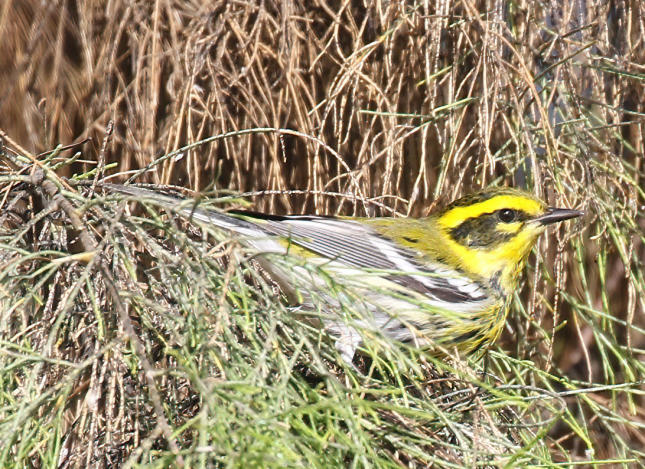
- Adult males have a black head and throat with a gleaming golden face and black cheek patch. They have gray wings with white wingbars, an olive-green back, and a yellow breast with bold black flank streaks. Females and immatures are similar but less strongly marked.
- Townsend’s Warblers forage by gleaning, hovering, and hawking insects in the foliage of conifers (especially when breeding) and deciduous trees, often around the outer portion of the canopy. In winter, Townsend’s joins mixed-species flocks in California and in the highlands of Mexico and Central America.
- Townsend's warblers are usually seen in Ventura county during winter, with higher numbers during fall migration.
Most of the information contained in this article is from Cornell Lab's All About Birds.

